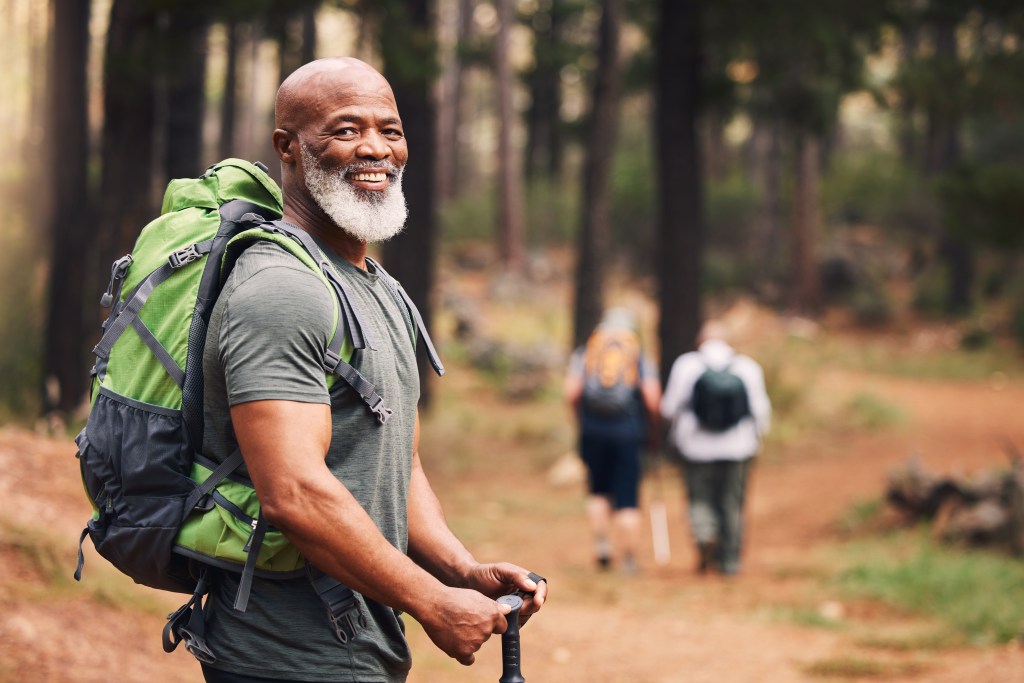At a glance
A brain detox supports the brain’s natural cleansing system, known as the glymphatic system, which helps remove waste, toxins, and damaged cells. This process promotes nutrient exchange and healthy brain function while reducing the buildup of harmful compounds that can impair cognition. Quality sleep, intermittent fasting, and regular exercise all play key roles in maintaining effective brain detoxification and mental clarity.
A brain detox can help improve cognitive function and mental clarity by promoting the elimination of toxins and waste products from the brain and central nervous system.
Here’s how to detoxify your brain and discover how sleep, exercise, and dietary habits can impact your central nervous system.
Glymphatic system explained
The glymphatic system is a waste-clearance system that facilitates the brain’s natural detoxification process.
In addition to waste and toxin elimination, the glymphatic system also enables the transport of amino acids, lipids, and neurotransmitters across the central nervous system, which plays a crucial role in maintaining healthy brain function.
Research published in Neurochemical Research found that the glymphatic system relies on a complex interplay between cerebrospinal fluid (CSF) and astrocytes, a specialized type of brain cell that provides structure and nourishes neurons.1
The flow of CSF through brain tissue allows nutrient exchange and the removal of waste products, which helps maintain normal central nervous system functions and may lower the risk of neurological diseases.
The glymphatic system plays a profound role in removing and eliminating certain abnormal protein clusters, including beta-amyloid and tau, which are strongly associated with the development of dementia and Alzheimer’s disease.
Watch the video below to discover the importance of sleep for brain health.
What is a brain detox?
A brain detox focuses on enhancing the body’s natural ability to cleanse the brain of waste products, heavy metals, environmental toxins, damaged cellular components, and defective proteins.
A buildup of these potentially harmful compounds can impair normal brain function and increase the risk of poor cognitive function, mental health issues, and neurodegenerative diseases.
Brain cleanses typically involve certain dietary and lifestyle factors that can activate the glymphatic system, trigger cellular repair mechanisms, and improve brain plasticity associated with better cognitive health and neuronal longevity.
Signs you need a brain detox
Impaired waste clearance and nutrient exchange in brain tissue can lead to poor brain function, which can manifest in a wide range of cognitive symptoms and behavioral changes.
Here are common signs that can indicate you may benefit from a brain detox:
- Memory issues
- Brain fog
- Difficulty concentrating
- Poor problem-solving skills
- Fatigue
- Mood changes
- Irritability
- Sleep issues
While these symptoms may be linked to ineffective glymphatic waste clearance, they can also be early warning signs of certain neurodegenerative disorders, and it’s crucial to consult a healthcare provider if you are concerned about your cognitive health.

5 ways to detox your brain
Research published in PLOS Medicine suggests that certain dietary and lifestyle habits can profoundly impact brain health and reduce the risk of neurological diseases and cognitive decline.2
Here are five ways to detox your brain.
1. Prioritize quality sleep
Sleep detoxifies your brain, and lack of adequate sleep can lead to various cognitive issues, poor mental health, and may increase the risk of dementia and Alzheimer’s disease.
Evidence published in Brain Sciences found that the glymphatic system is most active during slow-wave sleep phases, generally called deep sleep.3
Changes in brain chemistry during deep sleep allow an increased flow of CSF into brain tissue, which leads to an 80 to 90 percent higher activity of the brain’s natural detoxification processes than during waking stages.
To achieve a good night’s rest, it’s crucial to avoid stimulants like alcohol and caffeine, limit blue light exposure from digital devices, and maintain a consistent bedtime routine.
In addition, consuming plenty of sleep-promoting foods rich in magnesium and zinc can support restful sleep and help extend deep sleep phases linked to better brain cleansing.
Nutritious whole foods such as pumpkin seeds, spinach, cashew nuts, eggs, dairy products, and shellfish provide magnesium and zinc, which are important for supporting relaxation and maintaining healthy sleep patterns.

2. Reduce stress
Chronic stress can disrupt normal sleep cycle regulation and is associated with sleep issues, which can impair the body’s ability to effectively cleanse and detox the brain.
While it’s almost impossible to avoid all of life’s stressors, finding effective stress-reduction techniques can counteract the detrimental effects of stress on sleep and support effective brain tissue detoxification.
Practicing deep-breathing exercises, spending time in nature, socializing with friends and family, pursuing hobbies, and engaging in physical activities are excellent strategies to reduce stress.
3. Regular exercise
Physical activity plays a vital role in promoting glymphatic waste clearance, which may explain why exercise is associated with better brain health and a lower risk of various neurodegenerative diseases.
A study published in Frontiers in Molecular Neuroscience found that exercise can enhance blood flow to the central nervous system and stimulate the movement of CSF, which promotes nutrient exchange and waste-product removal to and from brain cells.4
In addition, moderate exercise routines and activities such as walking, gardening, or hiking can reduce stress and promote healthy sleep, which benefits cognitive functions and supports effective brain tissue cleansing.

4. Intermittent fasting
Intermittent fasting is an eating pattern that cycles between set periods of fasting and eating.
Extended periods of caloric restriction promote brain growth and have positive effects on the brain’s ability to eliminate waste products and toxins.
Fasting triggers autophagy, a critical biochemical process that recycles and removes defective cellular components, including faulty proteins and damaged mitochondria.
Autophagy promotes effective glymphatic waste clearance and helps cleanse brain cells from potentially harmful substances linked to poor cognition, neuroinflammation, and the development of age-related cognitive decline.
5. Limit carbohydrates and sugars
Increasingly more evidence suggests that a nutritious low-carb diet is associated with mental clarity, more energy, and better cognitive performance.
Limiting carbohydrates and obtaining most of your calories from healthy fats pushes your body into a metabolic state known as ketosis.
During ketosis, your body burns fat instead of sugar, which generates large amounts of ketones.
“Ketones cross the blood-brain barrier and serve as a very efficient fuel for brain cells,” explains Dr. Berg. “Ketosis promotes a steady and reliable energy source for the central nervous system, which enhances overall brain function, including the glymphatic system and detoxification processes.”
A study published in Frontiers in Neuroscience found that beta-hydroxybutyrate, a primary ketone generated during ketosis, has neuroprotective properties and directly enhances glymphatic waste clearance.5
The same study investigated the effects of glucose on glymphatic processes and concluded that a high-carb diet is associated with a reduced elimination of metabolic waste from neuronal tissue.
Key takeaways
- A brain detox activates the glymphatic system, which helps clear toxins and metabolic waste.
- Healthy habits such as quality sleep, intermittent fasting, regular exercise, and a low-carb ketogenic diet can promote effective glymphatic function.
- Supporting the brain’s natural detox process helps maintain cognitive performance, focus, and memory.
FAQ
1. How long does it take the brain to detoxify?
A well-working glymphatic system detoxifies the brain during deep sleep phases, which typically lasts between 1 and 2 hours per sleep cycle.
However, poor glymphatic waste clearance can cause a buildup of toxins and waste products, and it can take several weeks of good-quality sleep to detoxify the central nervous system properly.
2. How do you detox brain fog?
Brain fog can be a symptom of neuroinflammation, poor nutrient exchange, or a buildup of metabolic by-products, damaged cellular components, and other toxins in brain tissue.
Dietary and lifestyle factors such as restful sleep, physical activity, intermittent fasting, and a high-fat ketogenic diet can enhance the brain’s detoxification pathways.
3. What is a brain detox?
A brain detox focuses on stimulating the glymphatic system, which facilitates waste removal and detoxification processes in the central nervous system.
Certain dietary and lifestyle factors, such as good quality sleep, a low-carb diet, intermittent fasting, and regular exercise, can directly stimulate glymphatic waste clearance and promote effective brain detoxification.
4. What is the glymphatic system?
The glymphatic system facilitates the brain’s natural detoxification processes by channeling cerebrospinal fluid (CSF) through brain tissue. This allows nutrient exchange and the elimination of potentially harmful toxins, waste products, and damaged cellular components.
The glymphatic system is crucial for normal brain function and helps remove abnormal protein clusters, including beta-amyloid and tau, which are associated with the development of dementia and Alzheimer’s disease.
5. What is the best way to detoxify your brain?
The glymphatic system is most active during deep sleep, and getting adequate restful sleep is essential for effective brain detoxification.
In addition, physical exercise, intermittent fasting, and the ketogenic diet have been found to stimulate glymphatic waste-removal processes, which support the clearance of toxins and metabolic by-products from brain cells.
6. How do I know if I need a brain detox?
Symptoms such as brain fog, poor memory, difficulty concentrating, fatigue, changes in mood, irritability, and sleep issues can be signs of impaired waste-removal processes within the central nervous system and indicate that you may benefit from a brain detox.
Sources
- https://link.springer.com/article/10.1007/s11064-015-1581-6 ?
- https://journals.plos.org/plosmedicine/article?id=10.1371/journal.pmed.1002259#sec013 ?
- https://pmc.ncbi.nlm.nih.gov/articles/PMC7698404/ ?
- https://pmc.ncbi.nlm.nih.gov/articles/PMC5437122/ ?
- https://www.frontiersin.org/articles/10.3389/fnins.2022.926128/full ?








